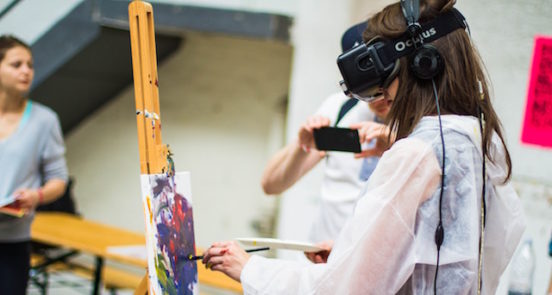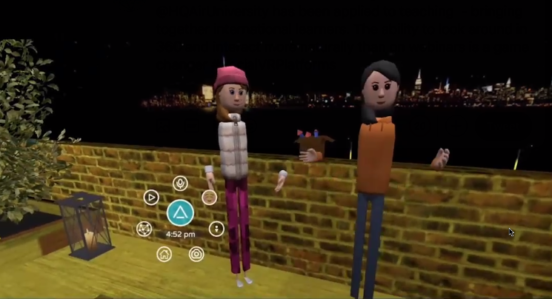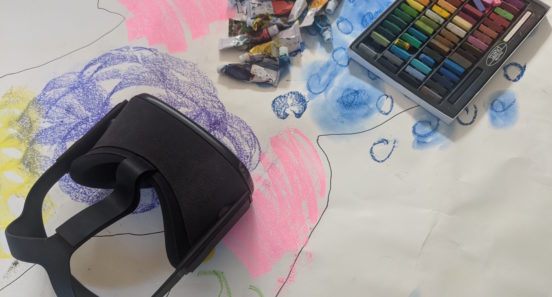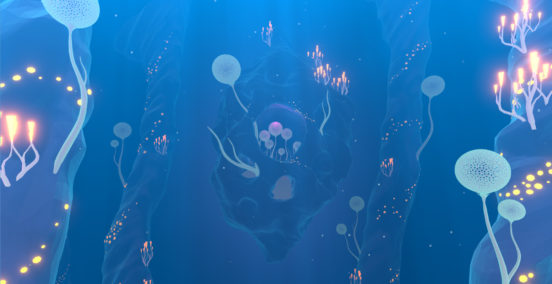Sarah Ticho, Immerse UK’s healthcare lead, and founder of Hatsumi, a global research and design studio exploring the intersection of arts, health and immersive technology shares more about how XR can contribute to our wellbeing.
The meaningful applications of immersive technology across enterprise, training and healthcare are increasingly apparent and invading our newsfeeds on a daily basis, proving that XR is so much more than entertainment. Covid-19 has further highlighted the desperate need to integrate technology into our daily lives, from conference calls and collaboration tools to creative development, research and delivering healthcare support.
Digital health is a priority for us all right now – and immersive technology – and virtual reality, specifically, has an extremely promising role in supporting us whilst in lockdown. Around the world hospitals and clinicians are using VR as a tool to enhance surgical training and education, supporting patients in physiotherapy and rehabilitation, pain management and mental health therapies. VR is also increasingly showing potential in diagnosis and assessment, gathering valuable and unique data that can offer insights into our bodies and behaviours.
Whilst VR is still developing within a clinical sitting, for those that do have the privilege of accessing virtual reality from their homes there are some immediate opportunities to utilise to improve wellbeing.
Five ways to wellbeing, and how virtual reality can help brighten your day whilst self-isolating:
1. Getting active
Motivating ourselves to shlep out the house or onto the yoga mat is an ever ongoing challenge, but games like the chart-topping Beat Saber, are motivating us to move and continue to keep trying to beat our high score. They’ve also now released “Fitbeat” , a new fitness song to keep you slashing through lockdown. UK companies such as Virtually Healthy, are currently conducting some exciting research into the efficacy of various virtual reality games to support health outcomes across fitness, rehabilitation and physiotherapy. Recent publications like Naked and Unafraid to Exercise in Virtual Reality demonstrate that using VR to exercise is becoming a far more common activity.
Other exercise games include:
Supernatural | Audio Trip | Dance Central | Creed: Rise to Glory | Eleven Table Tennis | Audica | Fruit Ninja | Pistol Whip | BoxVR | Space Pirate Trainer

2. Keep learning
One of the biggest growth areas in enterprise applications for XR has been across training and education. Companies like Make Real are creating bespoke training simulations for companies like Lloyds. However, for those currently on furlough and self-isolating both learning how to develop for XR, as well as using XR to learn new things.
Unity and Unreal offer loads of useful tools on how to get to grips with their software. Whilst WebVR is showing a lot of promise – Google and Mozilla can also offer some useful training tools too.
Augmented reality applications are exploring spatialised data visualisation, such as this example by a developer using t
he Hololens. There are a variety of experiences on the Oculus store including Adam Savage’s Tested VR, Human Anatomy VR, Google Maps VR and the quite frankly horrifying KFC training escape room. There is also a huge boom in virtual reality conferences and events across social platforms such as Altspace, Engage and Mozilla Hubs where you can connect with incredible researchers and developers worldwide.
Other educational and puzzle games include:
I Expect You To Die | Apollo 11 | National Geographic: Explore VR | Wander | Mission:ISS | Spheres | Job Simulator

Meeting in Altspace. Image courtesy of Rosie Collins, The Fred Company
3. Connect to others
Many of us are struggling with loneliness as a result of isolation in lockdown. It’s easy to see what an effect this has on our mental wellbeing, but also has significant implications on our physical health. There are a variety of social VR platforms with talks and spaces to gather together with friends. Half and Half is a beautiful, playful and relaxing social experience where you can play games with friends. Check out the ocean space, and enjoy floating through the peaceful world, chatting with friends or enjoying some alone time. Bask in the subtle haptics as you drift past shoals of fish. Where Thoughts Go is a beautiful social storytelling experience, where you can discover the stories and secrets of other players that have gone through the experience – and leave your own for others to find.
Other Social VR Spaces include:
Altspace | Engage | Mozilla Hubs | Rumii | VR Chat | Rec Room | Somnium Space
You can also hear more about Social VR spaces in our Social VR Platforms webinar series
4. Get creative
Artmaking and creative practice can offer a tool to enhance wellbeing through self expression. Creative practice, as well as being immersed in environments can improve mood, communication and social bonding.
There is an increasing interest from the community around the role of virtual reality art therapy, and whilst it has not officially been approved or trialled by organisations like the Art Therapists Association, research has demonstrated it has a lot potential in supporting patients, especially those without access to art supplies or are living remotely. Check out research by Hacman et al.
Additionally, my company, Hatsumi are developing a VR adaptation of an existing arts and health method called body mapping – inviting people to illustrate the embodied experience of pain and emotions onto a virtual avatar. The platform pairs evidence-based pain management techniques with a creative interface in order to bridge the mind-body gap. Users can express themselves through art, develop a better sense of their body and practice mindfulness techniques, while practitioners get a better insight into their patients’ experiences.
For inspiration, check out the Museum of Other Realities to see artworks by VR artists including Rosie Summers, Lee Mason and Sutu Eats Flies.
Other creative tools in VR include:
Tilt Brush | Oculus Medium | Gravity Sketch | SculptorVR | Pottery VR
From Explore Deep
5. Take notice
Practising mindfulness and meditation can significantly reduce anxiety and depression.
Research has shown that connecting to nature in VR can improve our wellbeing. Last year, Tony Langford, co-director of the Mindfulness Centre of Excellence presented at EVA conference on how combining nature and technology can have healing effects in his paper Return to Nature: How media art heals. By connecting biofeedback into VR experiences, we’re able to further explore the brain body connection, or as USCF researcher Adam Gazzaley calls it “closed loop digital meditation.”
VR enables us to focus, when often we get distracted by our environment, but by integrating our biometrics we can enhance our own awareness of our bodies. For example, Healium by Sarah Hill is a VR and AR experience which can also be integrated with biofeedback technologies including EEG headbands like the Muse and Apple Watch. In three peer reviewed journals, Healium reduced moderate anxiety by a third in as little as four minutes.
Explore Deep, is a beautiful example of biofeedback VR experiences for wellbeing. It is a meditative VR experience controlled by breathing, developed in collaboration with the Games for Emotional and Mental Health Lab and has shown to be effective in reducing anxiety and disruptive classroom behaviour in young people. The team are now exploring how Deep can be used in response to Covid-19 and supporting people with lung rehabilitation and overcoming breathing pattern disorders.
Other mindfulness experiences on the market include:
Tripp | Nature Treks | Real VR Fishing | Guided Tai Chi
Challenges in adopting XR in the age of Covid-19
There are a number of unique issues that we need to overcome before we integrate VR into healthcare – and especially during a global pandemic we probably want to be cautious about sharing equipment we strap to our faces. However, VR practitioners are far from discouraged, and there are simple ways to manage this, using medical-grade sanitisation wipes and specialist VR headset sterilisation companies like Cleanbox. Already, a number of hospitals are using VR in the fight against Covid-19. Led by Nick Peres and Oliver Colbourne-Laigh. Torbay Hospital in South Devon have launched a staff wellbeing VR lab. They are providing a series of relaxation experiences (complex with a massage chair) to staff, to offer some respite to overworked and burnout staff that are tirelessly working to save lives.
In New York, Eunoe is working with NYU Langone Medical Centre to begin preparations for a VR wellbeing lab. Whilst in California, Cedars Sinai hospital and in the North of England, Lincolnshire NHS Trust trials have begun exploring how we can prescribe VR headsets for patients for at home use. We’re still far from a world where virtual reality is directly being prescribed to people, it is no longer a matter of if this will be a reality, but when.
Already patients are recognising the value of immersive, taking VR into their own hands and using it to self meditate. For example, Kay Smith, an inspirational patient advocate who uses virtual reality to manage her pain every day. Hear Kay’s speech from Fringe, a VR healthcare conference run in Altspace right at the beginning of lockdown.

By no means is immersive technology a silver bullet, but is certainly demonstrating profound effects on our physical and mental health, with an ever increasing body of evidence supporting it. Frontiers recently released a new publication dedicated solely to research in VR, led by the legendary Mel Slater who has been working in VR and psychology for decades. With social isolation seemingly not going away anytime soon, it is likely we’ll see even greater investments into both virtual reality and healthcare – especially using immersive technology as a tool for preventative care. As a psychologist once said “How do we turn off the taps, instead of continuing to mop up the floors?” VR gives us a unique opportunity to truly place our health and wellbeing in our hands, and with an overworked NHS – care in the community has never been more important.
However, for a successful future for this industry we need greater diversity of developers and practitioners across the board, and to create cross-disciplinary collaboration between artists and games designers, researchers, patients and healthcare professionals. We need to consider how to make experiences as accessible as possible, both when designing with users in mind, but also how we access such expensive equipment. And finally, we need to make sure that we keep people safe, and help us build trust in the people designing our realities. We have an exciting future ahead of us, it’s not going to be easy, but if we get it right it will be a truly monumental shift in how we deliver healthcare.
Explore Immerse UK healthcare resources
- The Promise Of Immersive Healthcare Report by the Institution of Engineering and Technology in collaboration with Immerse UK and Hatsumi
- Exploring the potential of biofeedback-based VR interventions for the anxiety regulation with Joanneke Weerdmeester webinar recording (from 15 May 2020)
- Barclays Eagle Labs and Immerse UK Present: Immersive Art and Wellbeing webinar recording (from 27 May 2020)
Other resources
- Frontiers in Virtual Reality: an online Seminar Series
- VR Doctors Facebook Page
